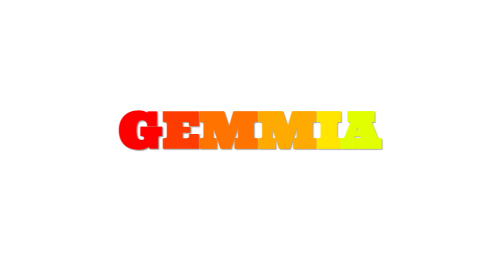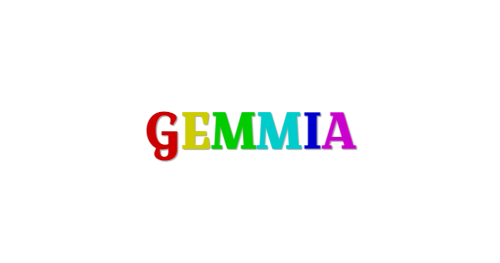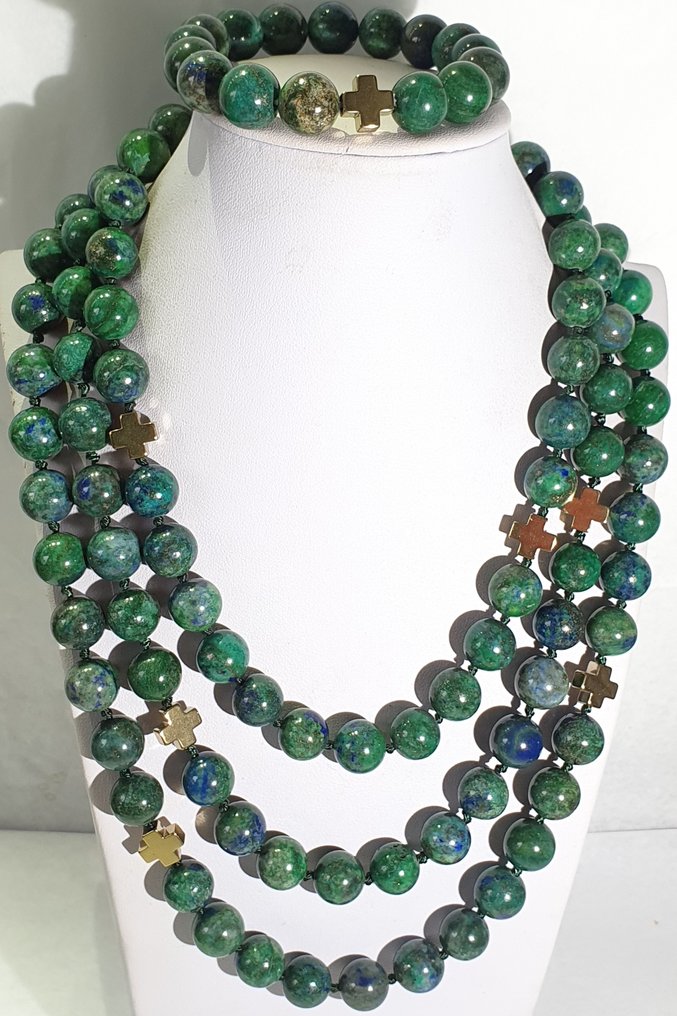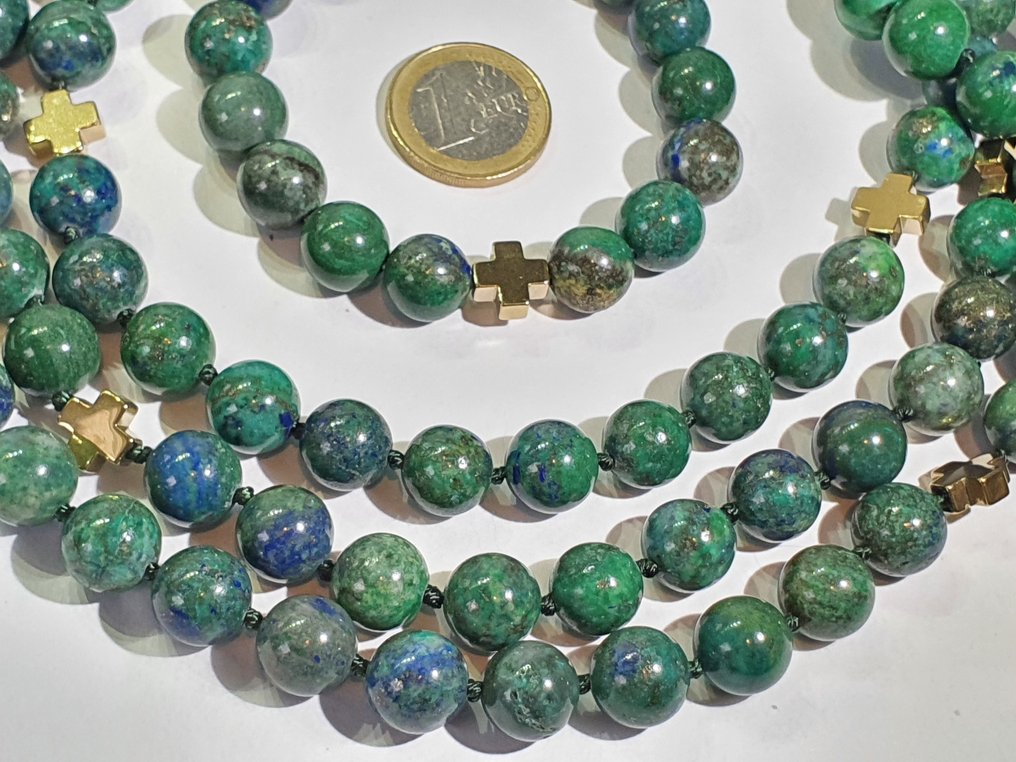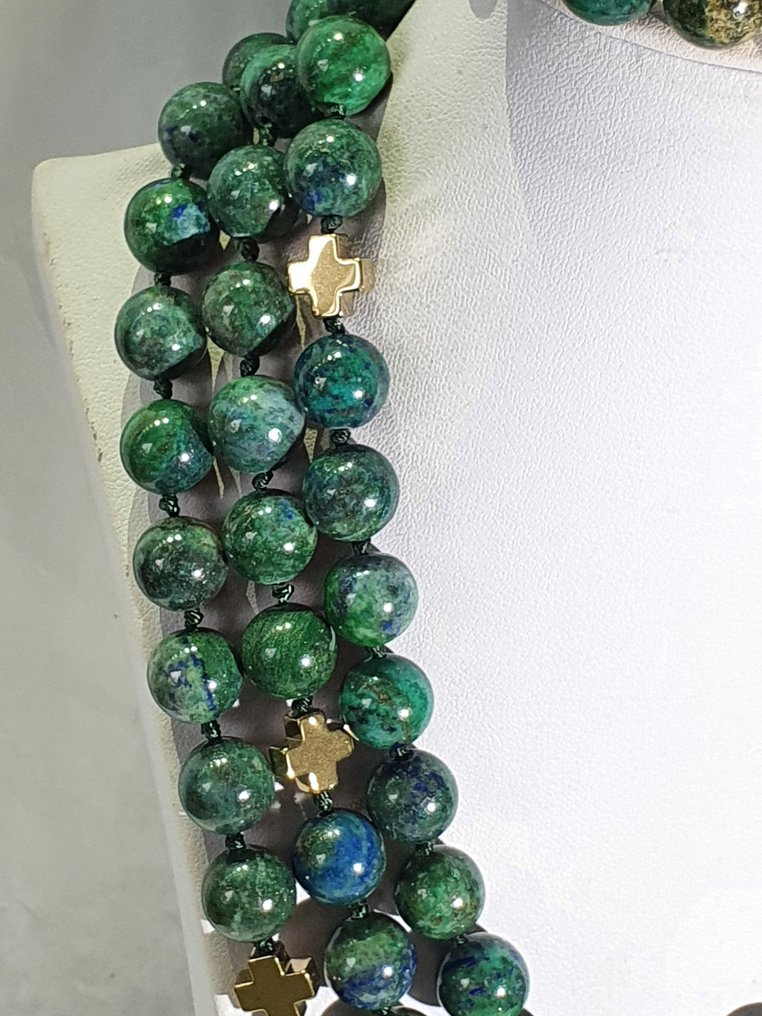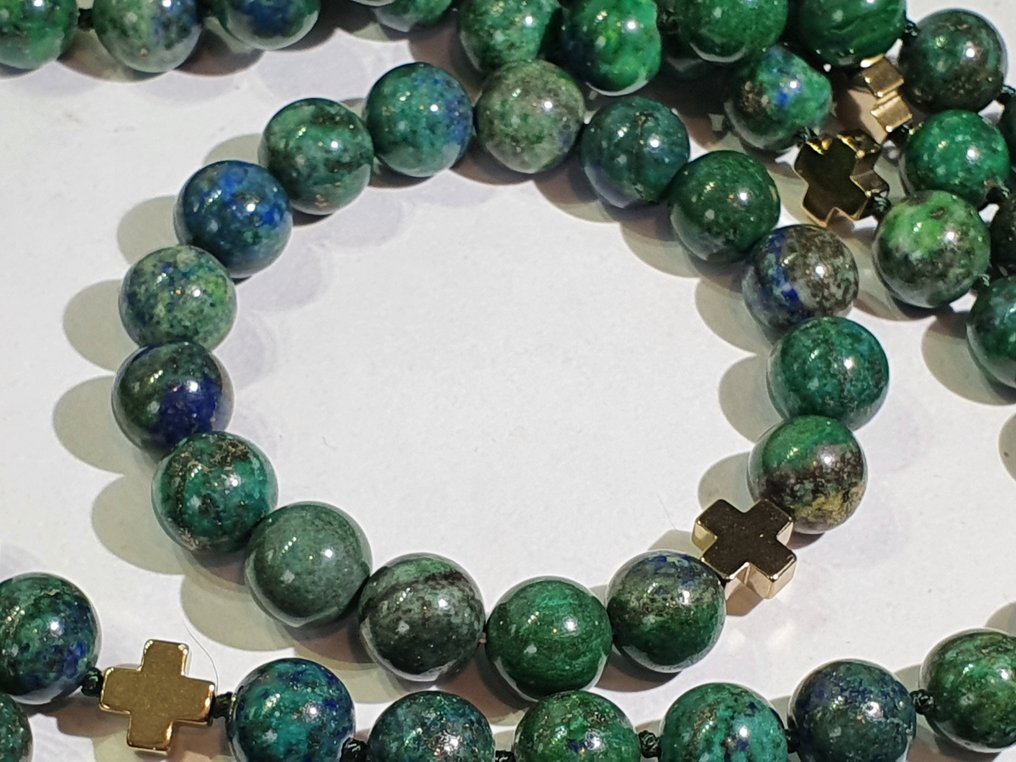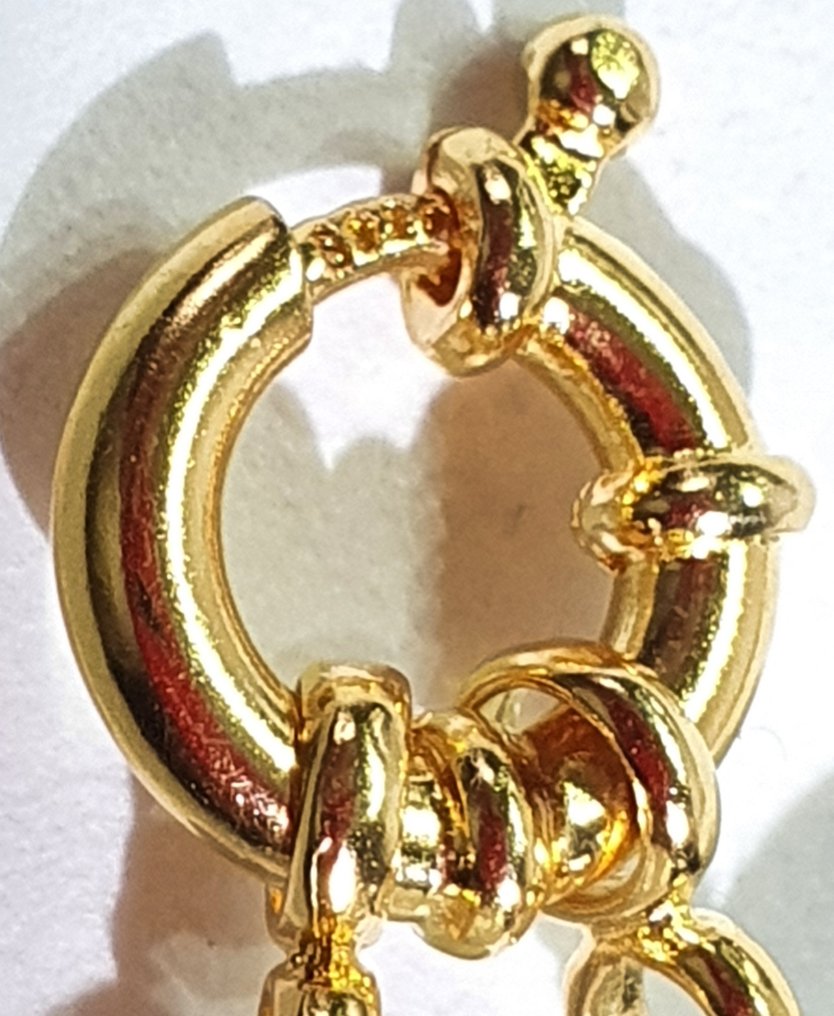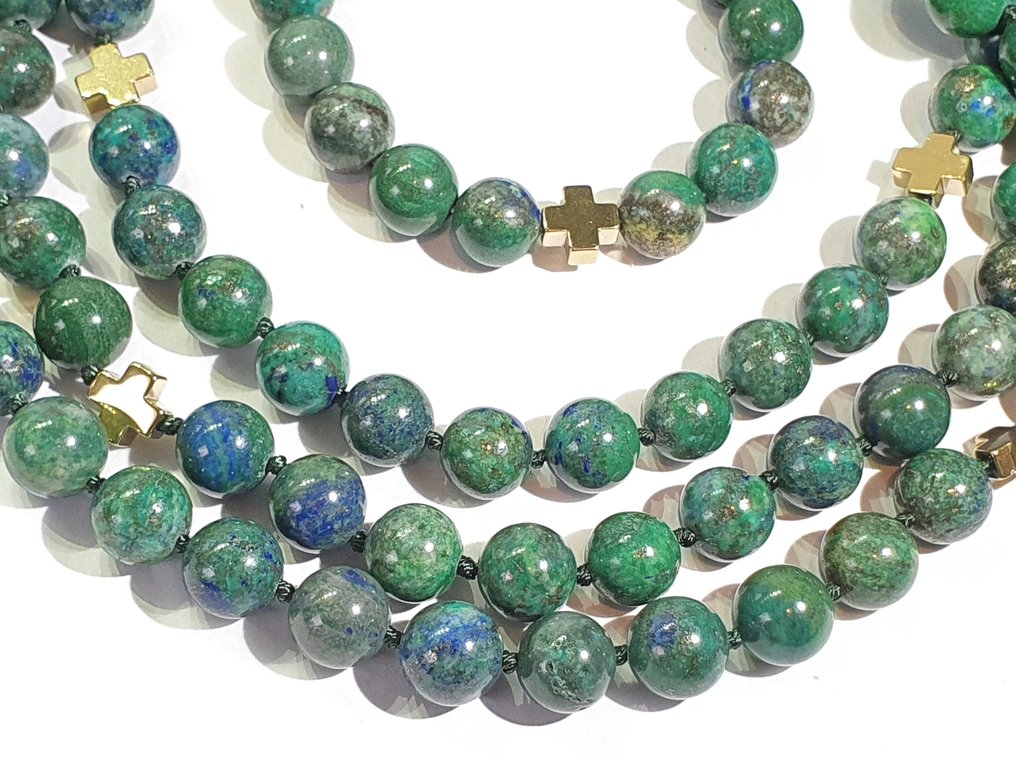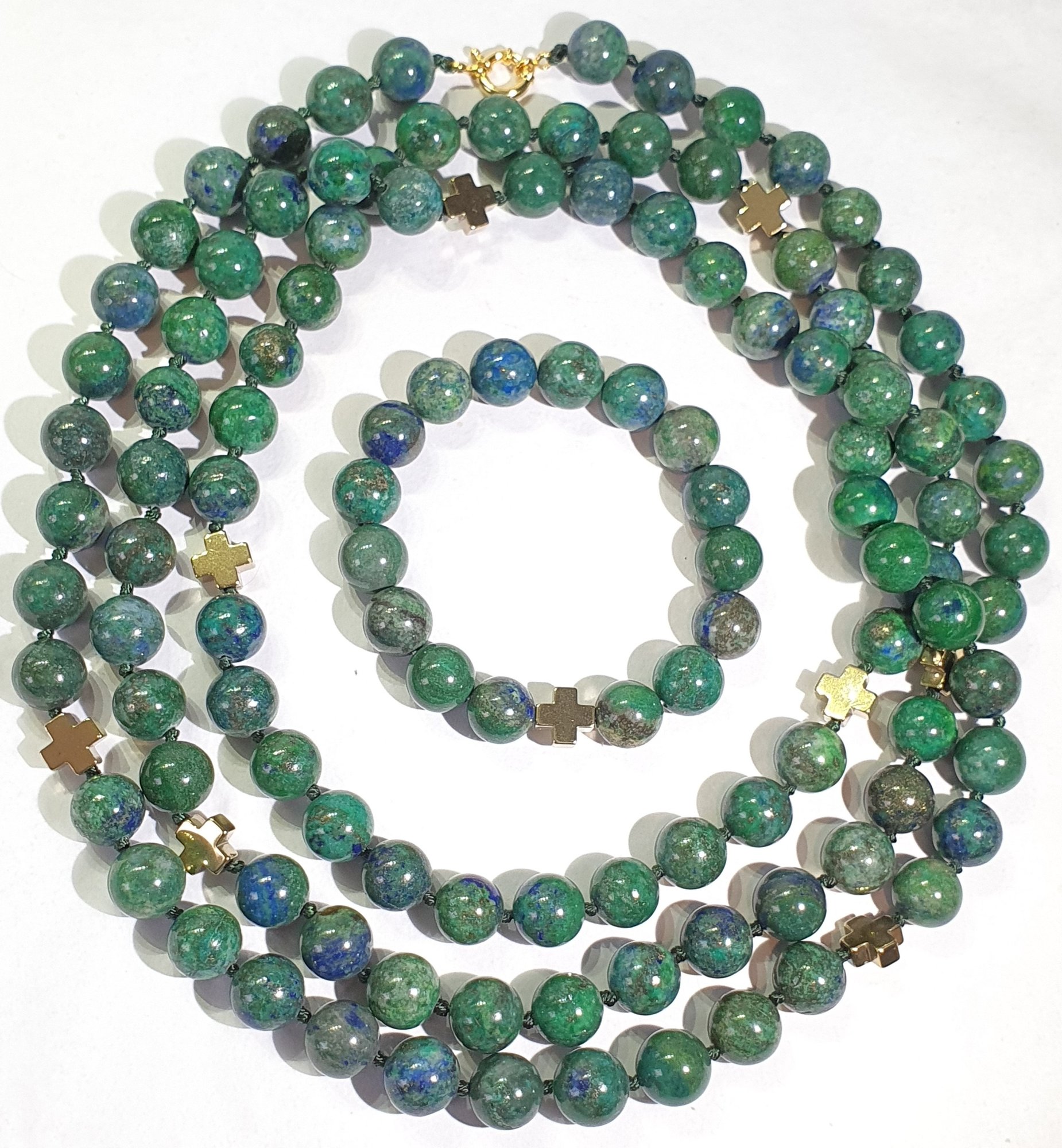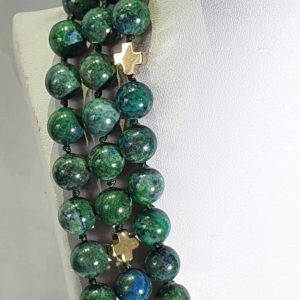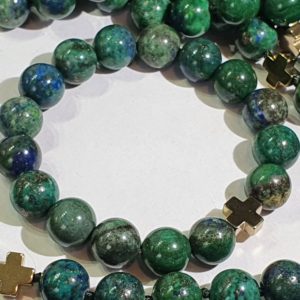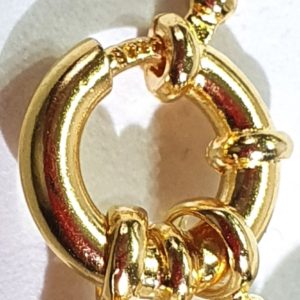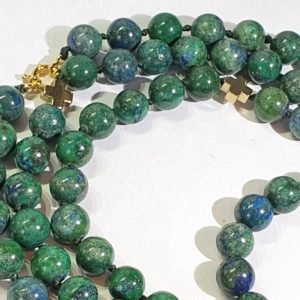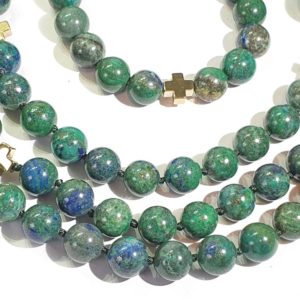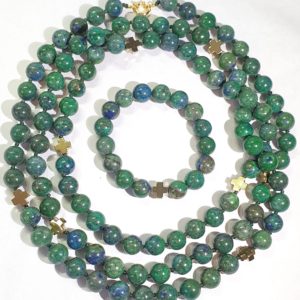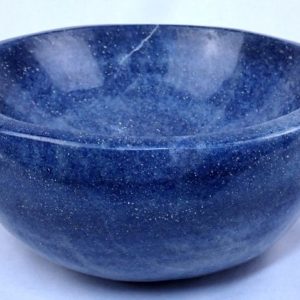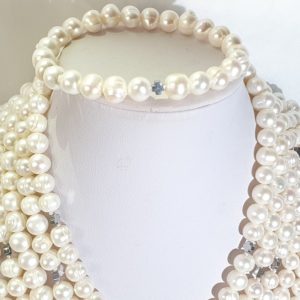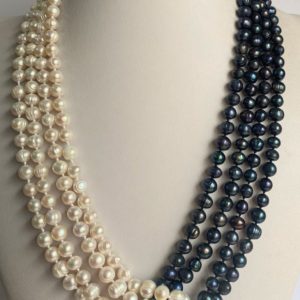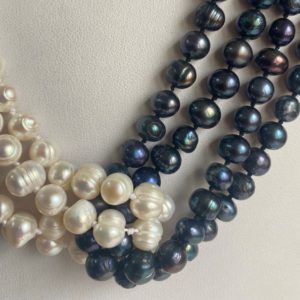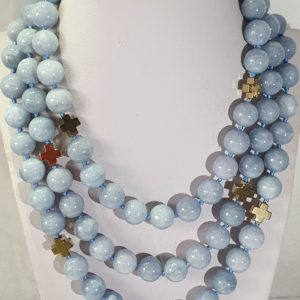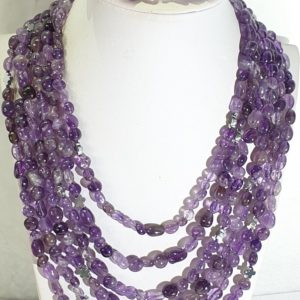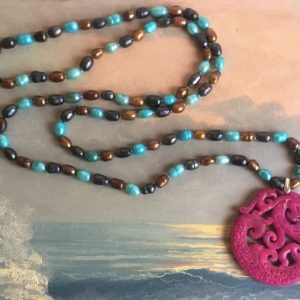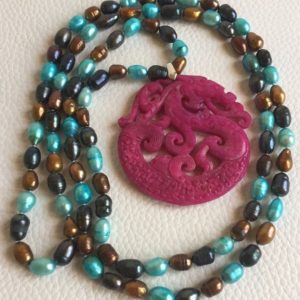Azurite-malachite and Greek crosses –
600 £ Original price was: 600 £.507 £Current price is: 507 £.
NO. OF ITEMS
OBJECT
MATERIAL
ESTIMATED PERIOD
COUNTRY OF ORIGIN
DIMENSIONS
WEIGHT
An exclusive long necklace and bracelet of gold plated hematite Greek crosses (protection and balance) and large azurite-malachite beads of the highest quality; The large clasp is made of gold plated 925 silver.
The necklace has been professionally spun by hand with knots in each bead a hematite cross.
The necklace, being long, can be worn in different ways.
Material: azurite-malachite – grade AAAA
Size: 11mm diameter
Greek crosses made of gold plated hematite
Necklace length: 149cm
Gold plated 925 silver clasp (large & solid) – marked “925”
Hand spun with knots in each bead and cross
1 Bracelet done in elastic band
Origin: Spain
gift boxes
The azurite-malachite stone is a very powerful stone. In fact, it allows a strong spiritual connection, and promotes clairvoyance, visions, as well as telepathy. Placed on the top of the head, this stone helps us to better understand the world through a global vision, like a developing third eye. This stone is used as a pendulum by mediums as it is an interface between our world and the afterlife. Thanks to its strong power of connection, it is ideal for remote care or meditation. In addition, the malachite azurite stone is very well relieved by placing it on the chakras. Placing this stone on your throat will help get rid of speech problems, and placing it on your forehead will take you to another world by helping you establish an extrasensory connection. It is also advisable to rub the azurite to release its benefits. In fact, it is a “friction” stone, which will make you benefit from its positive energy through its simple friction. The malachite azurite stone helps to attract and develop positive energy, and at the same time removes negative energy by absorbing it.
Greek cross (crux quadrata): An old type of cross with arms of equal length.
It is the most absolute simplification of the symbol. It is the concentration in its pure state.
The meaning of the Greek Cross is that of protection and balance, due to its symmetrical shape with arms of the same size. It is also believed that the Greek cross is a representation of God and on the other hand the Latin cross that we all know is the representation of the crucifixion of Christ.
The Greek Cross despite the fact that its name indicates that it was born and used mainly in Greece, it is not. The Greek Cross makes its appearance in the East by the Christians who inhabited those territories. The cross was based on the Immisa Cross where Jesus died but with the stick shortened, giving it a symmetrical aesthetic to be able to see it in the same way from any direction.
It is believed that the use of this cross in the East was influenced by the True Cross found in Jerusalem. Helena of Constantinople, also known as Saint Helena, dedicated her life to finding the relics of the True Cross (the cross where Jesus Christ was crucified). She traveled to Jerusalem in about 326 to discover its location. She finally said to find the place where the true cross and the tomb of Jesus was located. Then her son Constantine built a church at the request of her mother in the same place where there was already an ancient temple erected to Venus (for the Romans) or Aphrodite (for the Greeks). This church was known as the Church of the Holy Sepulchre, located in the area of the old city of Jerusalem.
After finding the cross where Jesus Christ died, Saint Helena cut off the lower part of the Cross (approximately a fifth of its height) and sent it to Rome as a relic, known as the Lignum Crucis. She then left the remaining cross in Jerusalem, which, having been sawn, was left in the shape of a Greek Cross.
Related products
Uncategorized
Uncategorized
Uncategorized
Set “Yin Yang” from Natural White and Black Pearls. – Wisdom and Harmony. Sterling Silver 925.
Uncategorized
Uncategorized
Necklace of Light and Dark Freshwater Cultured Pearls. Buddhist Agate Amulet with Dragons
Uncategorized
